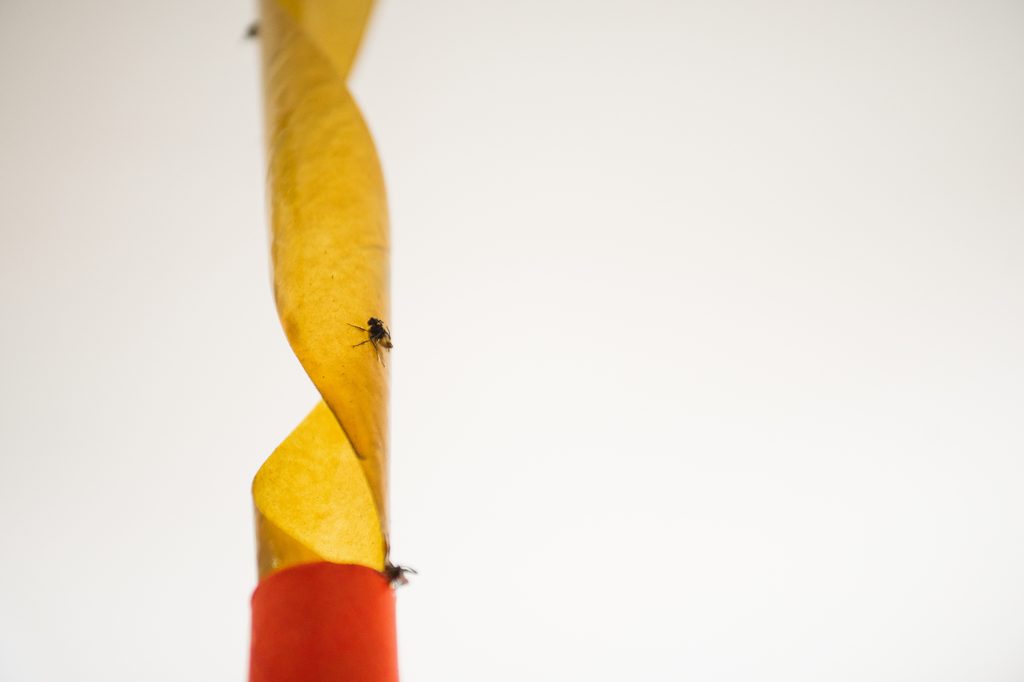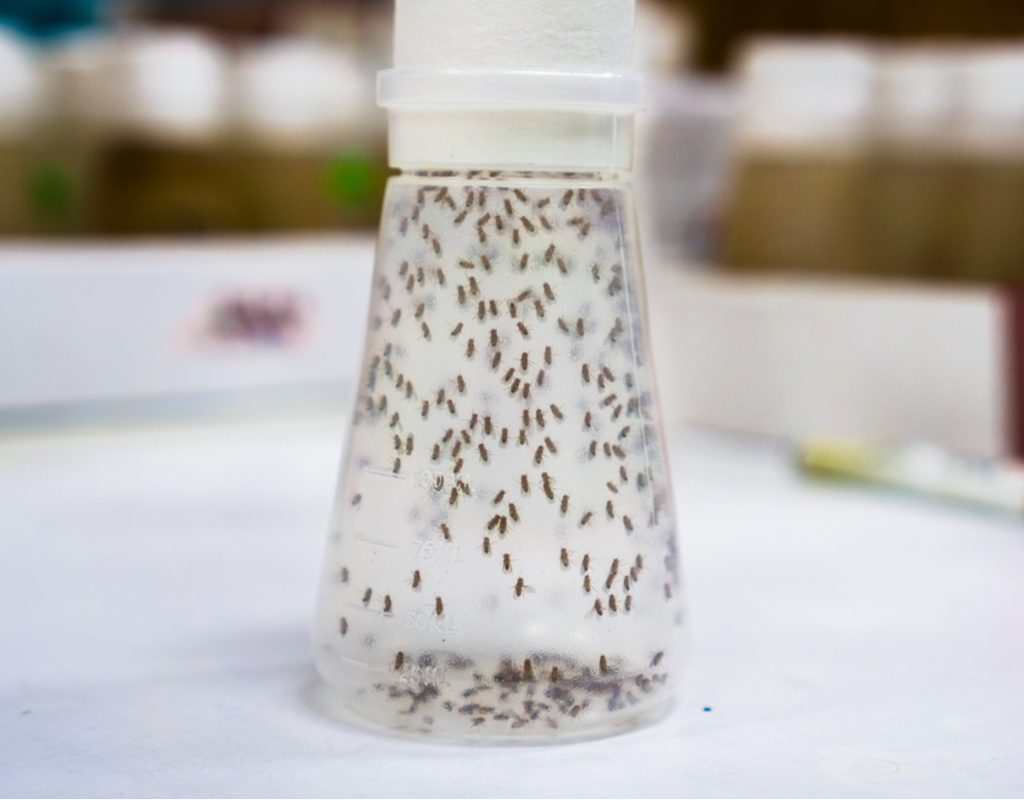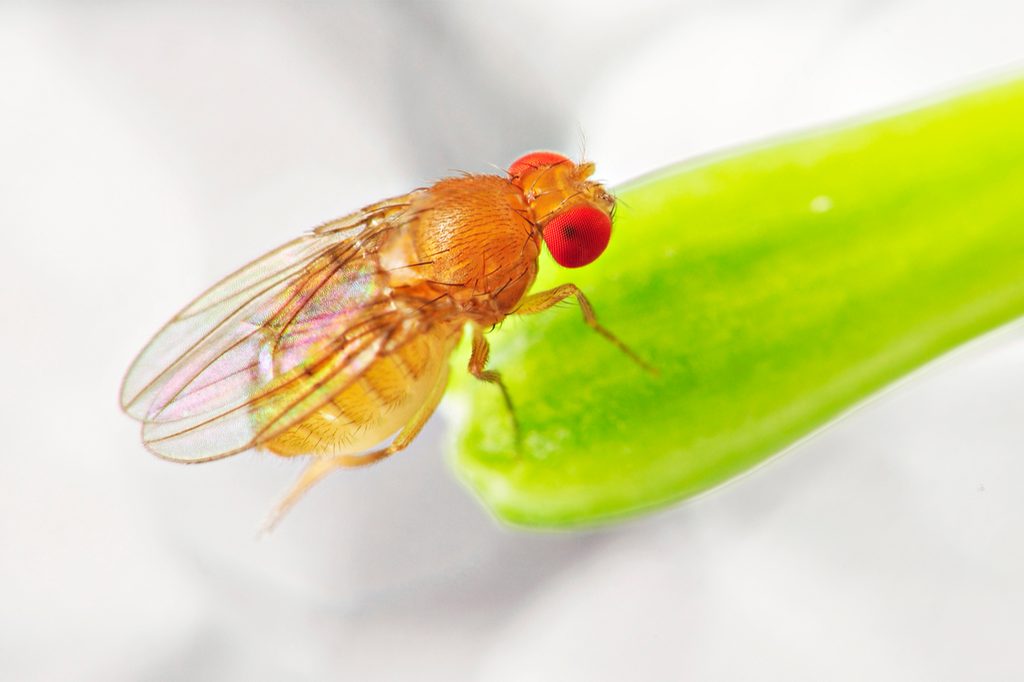Tiny flies are quick to invade our homes, especially in warm, humid weather. Left alone, these bugs are capable of causing a disgusting and embarrassing infestation that may last for weeks or months. They erupt in clouds above potted plants, swarm around trash cans, and hover over drains. For many homeowners, these pests present more than a few problems, making kitchen prep frustrating and hosting gatherings near impossible.
If you’re struggling to control the new fruit fly population invading your space, we have a few simple steps to help you keep them out of your kitchen for good.

What causes a fruit fly infestation?
Before you can begin eradicating fruit flies from your space, it’s important to understand the causes of an infestation. Lack of moisture control, overly ripened produce, and infrequent cleaning can all contribute to a thriving fruit fly population in your home. Before you begin tackling these insects, you should consider what areas of your home could be helping them grow and prosper.
Here’s where you should look to determine how to best rid yourself of a fruit fly infestation:
- Clogged or smelly drains
- Garbage disposals
- Overly ripe produce on the counter
- Filled trash cans
- Over-watered houseplants
- Clogged outdoor gutters
- Mops and cleaning rags

First, identify and eradicate fruit flies and their lookalikes
We may casually refer to them all as fruit flies, but there are at least four distinct insect species that could be the root of the problem. In any case, if you want them out of your home, you’ll need to know the difference in order to eliminate the conditions that attract them.
Fruit flies
Fruit flies are tiny, oval flies with clear wings that can grow up to one-eighth of an inch long. Their bodies are tan and black with a gray underbelly and big red eyes (although some have dark-colored eyes).
As their name suggests, fruit flies often crawl on and hover near over-ripened fruit or scraps of produce. Attracted to any moist environment with fermenting fruits and veggies, they also frequent sink and floor drains, garbage disposals, empty juice, wine, or beer containers, trash or recycling containers, mops, and cleaning rags.
Fungus gnats
Fungus gnats are the same size as fruit flies and have similarly transparent wings. However, these gnats have a thin, grayish-black body with long antennae. Larvae are minuscule wormlike grubs that may appear translucent, with a black head and dark gut.
Unlike fruit flies, fungus gnats live in and around moist soil. They are especially attracted to the damp peat-based potting mix that most house plants grow in. When the plants are undisturbed they may not be evident, but as soon as they’re watered or moved, fungus gnats erupt from the soil surface, stems, or undersides of leaves.
Phorid flies
Phorid flies resemble fruit flies in size, but range in color from black to dull brown. Upon close inspection, they appear to have a humpback due to their arched thorax.
Phorid flies often find their way into homes by hitching a ride on garbage cans or compost containers where fruits and veggies are discarded. They may also find favorable breeding conditions in recycling bins, damp mops, wet rags, or in the evaporation pan beneath a refrigerator.
Drain flies
Drain flies range in color from yellowish to black. They are fuzzy like moths with scaly wings that they hold over their body like a roof when resting.
These nuisance bugs are typically found hanging out on walls or ceilings and breed in the stagnant water of rarely used toilets, sinks, floor drains, and refrigerator evaporation pans. They can also breed outdoors in moist areas like clogged gutters or the space around air conditioning units, then find their way into homes through open doors or windows.

How to eliminate fruit flies from your kitchen once and for all
To eliminate a fruit fly infestation in your home, follow five simple steps.
Trap adults
Trapping adult flies is the first step in ridding these pests from your kitchen. To trap them, you’ll need to have some apple cider vinegar on hand.
To create a simple fly trap:
- Find a glass jar and a safe place nearby the infestation area.
- Pour one cup of apple cider vinegar into the jar.
- Next, wrap plastic wrap around the opening of the jar and secure it with a rubber band.
- Then, use a pencil or small needle to poke holes in the plastic wrap. Let the trap sit overnight.
This is a simple method for trapping fruit flies. The insects are attracted to the vinegar and once they enter the plastic wrap via the small holes, they become trapped inside. For the best results, place a few of these traps in areas where the infestation is greatest.
Alternatively, you could also use a small dish or bowl with one cup of vinegar and three drops of dish soap, leaving the bowl uncovered to attract the insects. Once again, the fruit flies won’t be able to resist the scent of apple cider vinegar. And thanks to the dish soap in the mixture, you can gain more control over your kitchen once again with this easy-to-make trap.
Practice good household sanitation
To prevent an infestation, you need to practice good household sanitation. Dispose of damaged produce and leftover food scraps promptly. Clean up any spills when they occur, and don’t forget to regularly clean trash cans and recycling bins. Cleaning out your garbage disposal and tackling any areas where moisture accrues in your home can also help you eliminate these pests. If an infestation has already begun, give your whole space a deep cleaning to identify and eliminate the breeding habitats.
Check your houseplants regularly
Some flies, like fungus gnats, build their breeding habitats in houseplants. If you’re still struggling to control the fly population in your space, you might need to give your houseplants some special treatment. Prevent and eliminate fungus gnat infestations with good watering practices. Water deeply but infrequently, allowing the soil surface to dry out in the interim. If larvae are feeding on decorative plants, apply systemic insecticide. However, don’t use a systemic product on plants that you consume because it can be poisonous if ingested. Instead, use yellow sticky traps to monitor and reduce the adult population.
Control indoor humidity
Larvae require locations with consistently moist decaying organic matter, including areas near plumbing and crawl spaces. Foggers and other area pesticide sprays will kill adults, but not larvae, so prevention is key. Sanitation and moisture control are critical to permanently eliminating infestations.
Eliminate breeding habitats
As we mentioned above, reducing the amount of breeding habitat available to fruit flies is essential for ridding your home of an infestation. While trash cans, fruit containers, and houseplants are some of the top locations for fruit fly management, there are several other areas of the home where these pests could grow and thrive. Consider cleaning and maintaining your outdoor areas to prevent infestation. Keep gutters and downspouts free-flowing, and ensure that all water drains away from the house.
Fruit flies may just appear to be nuisance bugs, but they can spread illness by transmitting bacteria in food preparation areas. To prevent and eliminate these pests, practice good home sanitation and moisture control. Eliminate the breeding ground and the pest will eventually move elsewhere.


